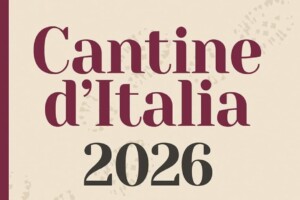This year has definitely been a challenge to the wine sector, especially on international markets, considering the substantial drop in sales, as reported here. It has been like a bucket of ice water, after such a positive 2022, leaving deep concerns for the future. There are numerous possible “threats” from inflation, and consequently the drastic collapse in consumers’ purchasing power as they no longer fill their shopping carts with rapidly changing trends like they used to. It is not, therefore a coincidence that the new generation does not seem as attracted to the “wine product” as in the past, preferring to explore elsewhere. However, it is still premature to say that “it is all bad”. Italian wine has all the right cards to make a comeback, so a negative year must not make us forget the trend over recent years that showed a plus sign. The wine sector needs to reflect on the situation, look to the future optimistically and dynamically considering how rapidly markets change. The 10th edition of the Wine Monitor Forum by the research and consulting company, Nomisma, entitled appropriately, “Finding the key to the problem”, revealed numbers for wine that went right to the heart of the issue. Speakers included Federico Zanella, president & CEO of Vias Imports, one of the main wine import companies in the USA, as well as two of the top managers and entrepreneurs in the Italian wine world, Ettore Nicoletto, president & CEO of Angelini Wines & Estates, and Lamberto Frescobaldi, at the helm of Frescobaldi.
Denis Pantini, head of Agri-food and Wine Monitor Nomisma, introduced the state of the art of Italian wine and prospects in the main foreign countries, stating, “2023 is an uncertain year for the wine world as it is full of critical issues, especially on international markets”. His evaluation originated through a significant fact in 2022., which he said was, “of the 30 most important markets, 20 have recovered in terms of volume what they had lost due to Covid”. Then came the downturn, as imports fell considerably in the first eight months of 2023: the US, -13.4%, UK -5.7%, France -0.8%, China -27.2 % (considered “the big sick man” by many people), Japan -11.3% and South Korea -19.3%. Further, purchases from Italy, in line with the market trend, are decreasing practically everywhere. “Sparkling wines have improved only slightly”, Pantini said, “registering negative differences compared to 2022, especially in volumes. France, on the other hand, has continued to achieve significant growth, at +33% in value and nearly +18% in volume”. And Italy is becoming an increasingly interesting market for bubbles. Then there is Germany, the number one market in volume for Italy, but their economic situation is delicate. The stability of imports is linked to bulk and bag in box, and in 2023 Italy has grown in volume (+7.1%),but has lost in value (-5.3%).
The situation on the international level is also worrying, as only Portugal and New Zealand, among the top exporters, are growing both in value and volume. Federico Zanella, president and CEO of Vias Imports, (who work with wineries such as Cataldi Madonna, Basilisco, Statti, Vie di Romans, Principe Pallavicini, Velenosi, Giovanni Rosso, Protutti del Barbaresco, Pecchenino , Leone, De Castris, San Leonardo, Fattoria del Cerro, Castello dei Rampolla, Campo alla Comete, Rocca di Frassinello, Salvioni, Còlpetrone, Argillae and Speri, among others), gave an in-depth focus on the situation in the United States.“To correctly understand what is happening today in the United States, we must take a step back and analyze 2022 in its entirety. In the first half of a definitely positive year, we have seen that there was actually euphoria in American demand, but then we witnessed the crisis in the logistics chain and an accumulation of containers leaving Italy. In the third quarter, there was a drop in demand, consequently unblocking logistics, which flooded the American market with wine. This was not followed by an increase in demand, so distributors ended up with an overstock. These, then, were the premises for the “bomb” that exploded in 2023. We have seen that the FED started raising rates from the beginning of March 2022, and has not stopped until now”. The consumption scenario has changed as well, considering that “there is a general collapse in all categories, and rosé wines are hurting the most. We are selling more per customer, but compared to 2019, there are 10-15% fewer restaurants open in the United States, consequently there are fewer to sell to. Following the boom in 2020 of off-premise, there has been a constant, and gradual decline in volumes, which will be added to the negative performance of the chains. How long will it take to clear the overstock? I think that by the end of the first quarter of 2024 we will begin to see orders of smaller, but more constant quantities over time”.
China seems to be one of the markets that is doing the worst. However, Lamberto Frescobaldi, president of Marchesi Frescobaldi, one of the great Italian wine families, sees some positive signs for the future. He reminded us that over the past two years companies have made profits, and regarding China, “it's not doing that bad. Those who have paid more attention and continued to cultivate their customers, have managed to maintain their market share, and even increase it, in China and in all those markets that are now considered to be in a critical situation, such as the USA. Here, some companies are doing better than before. On the German market, instead, which is very careful about spending, almost everyone is registering a negative sign. The world is not coming to an end, but we need to keep our feet on the ground and also admit our responsibilities, because some have increased prices unjustifiably, and now they don’t want to go back, but they will have to, and they will have to make companies more effective. Which markets are the most promising in the next few years? There are always opportunities in the United States- New York is repopulating - and Canada is still a very good market. Italy did better on the Russian market than France did. China is an enormous market, it is not an emerging Country, but it can be gratifying. The National market still offers great opportunities, and tourism has grown a lot. We can also look close to home by improving the distribution chain. All of Italy is a city of art, and the catering sector is doing very well”.
The wine world must take into consideration not only changes in the market, but in consumers, too, and their reduced purchasing power. Emanuele Di Faustino, head of Industry, Retail & Services at Nomisma, emphasized the centrality of Italy, which at “23 million hectoliters, is the third largest market in the world for wine consumption, after the United States and France”. In the September 2023 survey, compared to a year ago, wine has +3.1% inflation, which in any case, is lower than beer (10%) and spirits (5%). “Nine out of ten Italians have changed their purchasing behavior in the food shopping cart; 80% have implemented strategies to fight price increases”. After years of growth, the modern distribution wine market registered a decline in 2022 in volumes sold, together with a realignment following the Covid emergency window. The realignment was in volume, “driven by sparkling wines, which grew + 50% in the space of six years”. In 2023, sales value (January-September) stands at 2.3 billion euros, an increase in values (+3.5%) and a decrease in volumes (-2.3%). On the mass retail trade, during the first few months of the year, PGI wines grew in value while sparkling wines grew in volume. Where are wines consumed? “The domestic channel”, Di Faustino explained, “ is the main one, absorbing three-quarters of consumption. People under 25 drink less wine and less frequently, but also in different ways; for instance, mixed wines, and they pay more attention to health aspects and sustainability. They have a different approach to wine: only 38% of Generation Z drinks wine outside the home, while among the over 55s the percentage drops to 17%”.
Ettore Nicoletto, president & CEO of Angelini Wines & Estates, also focused on the changing consumer audience . Regarding the red wine crisis, Ettore Nicoletto explained that it is “premature to say there is a crisis including structural characteristics while the consumption situation is more critical. I don’t know what it could depend on. In my opinion, a lot has to do with the audience that is changing, which we need to be aware of as soon as possible. We need to work on understanding the situation better. For instance, there is a very large category of red wines that should be rethought and stylized. That means, less alcohol, more verticality, more tension and energy. lower alcohol content can be the tool to court a category of consumers that due to prejudice, will not approach a 15% alcohol content wine”.
Copyright © 2000/2025
Contatti: info@winenews.it
Seguici anche su Twitter: @WineNewsIt
Seguici anche su Facebook: @winenewsit
Questo articolo è tratto dall'archivio di WineNews - Tutti i diritti riservati - Copyright © 2000/2025









































































































































































































